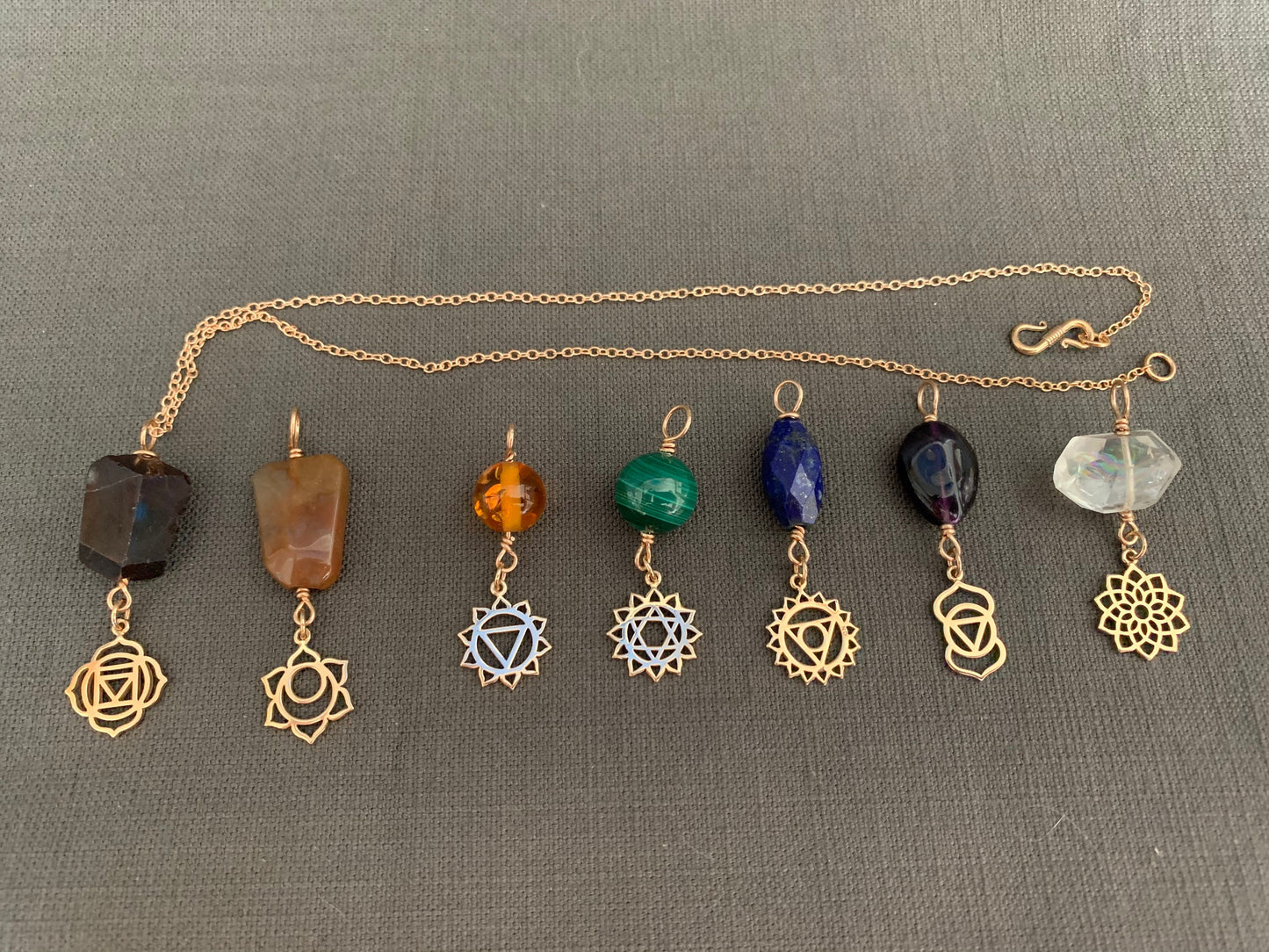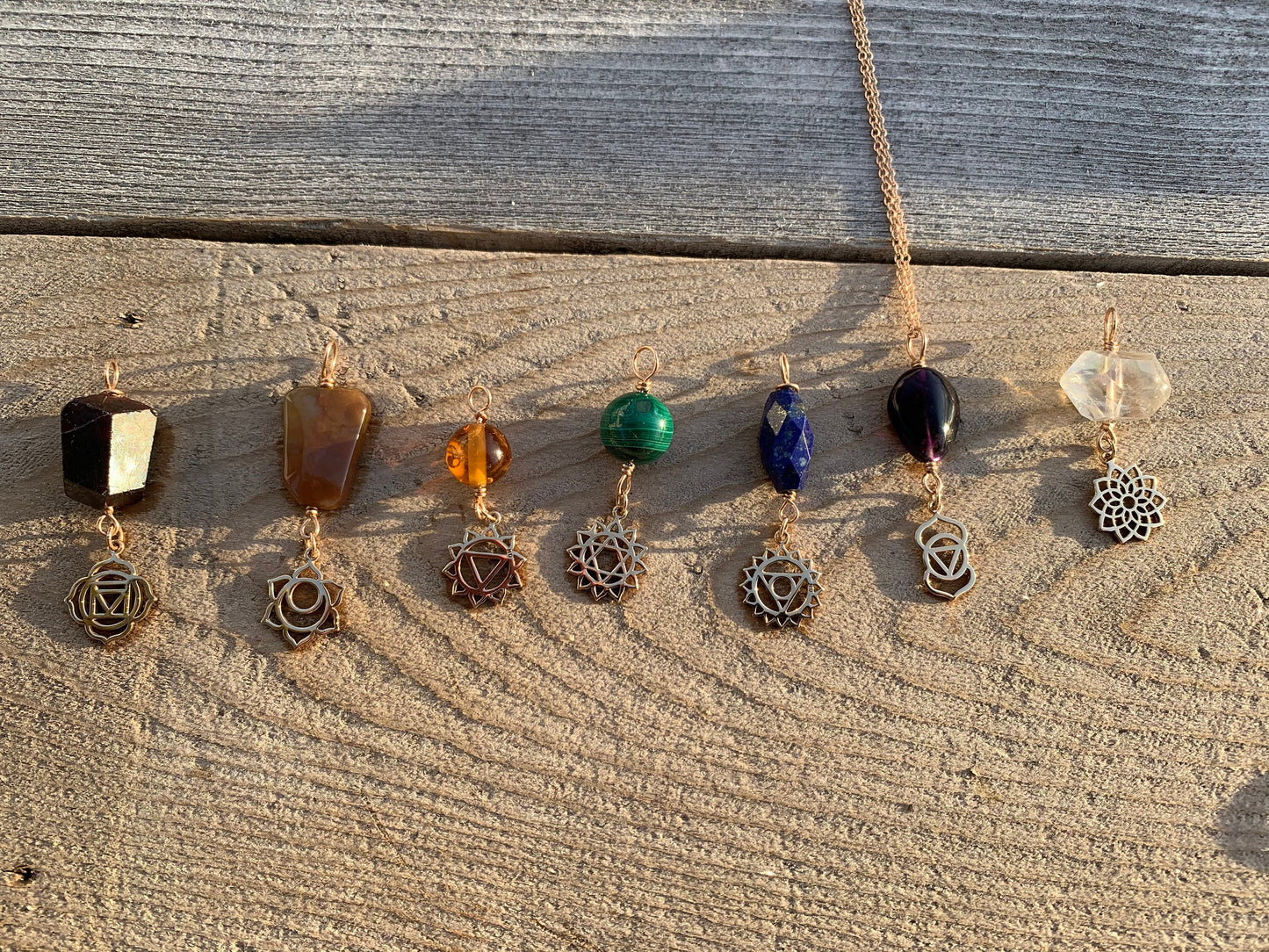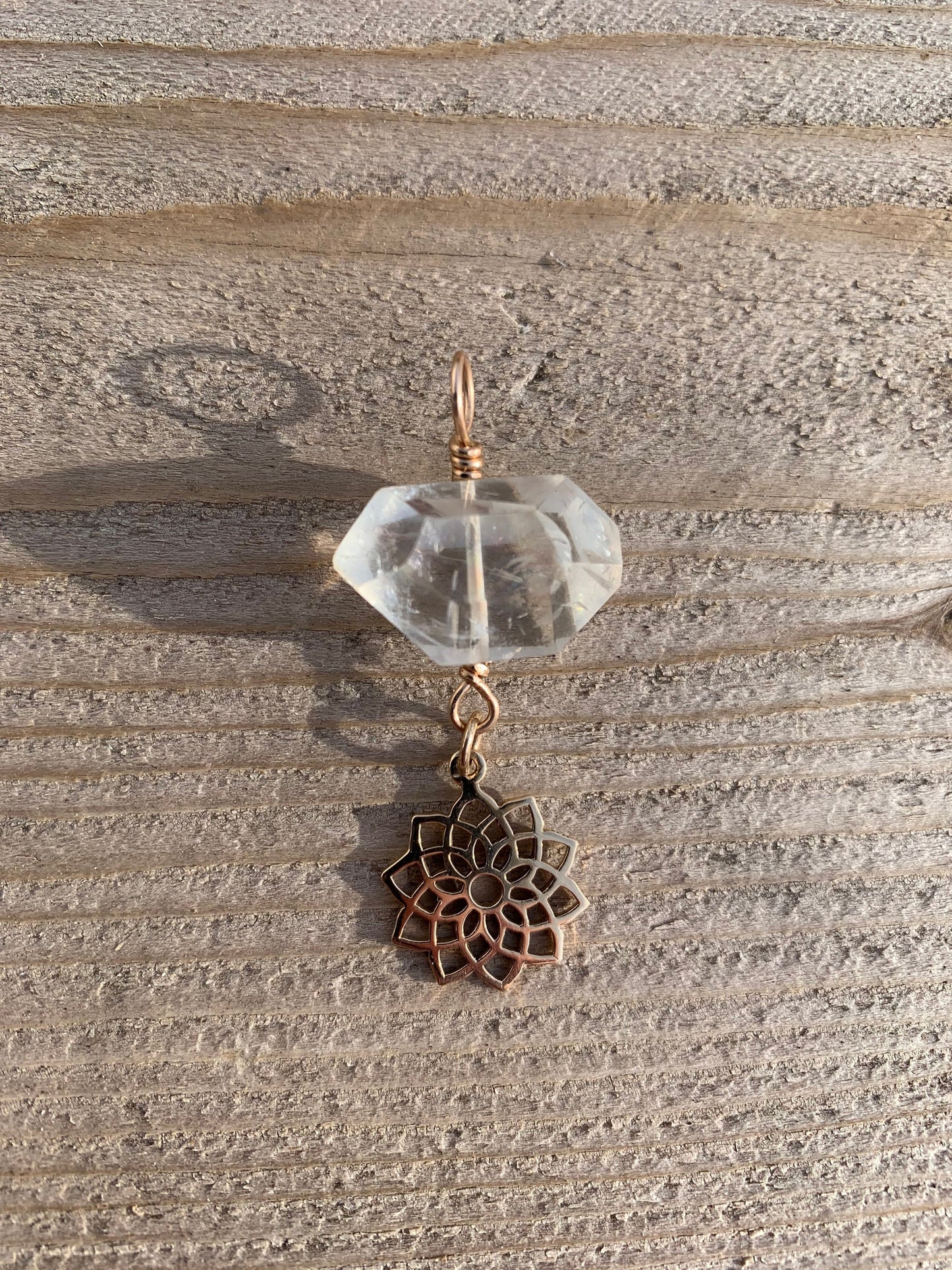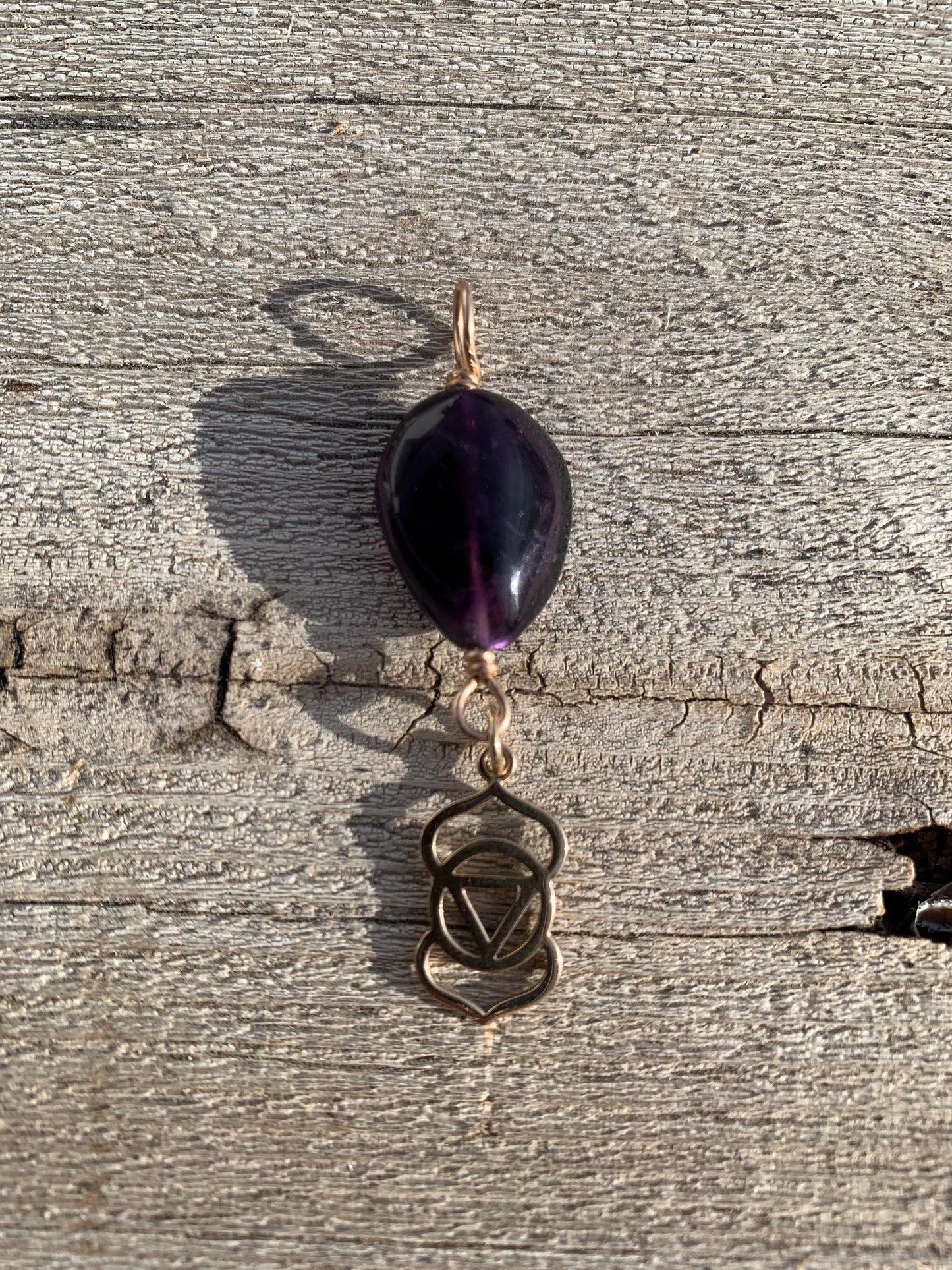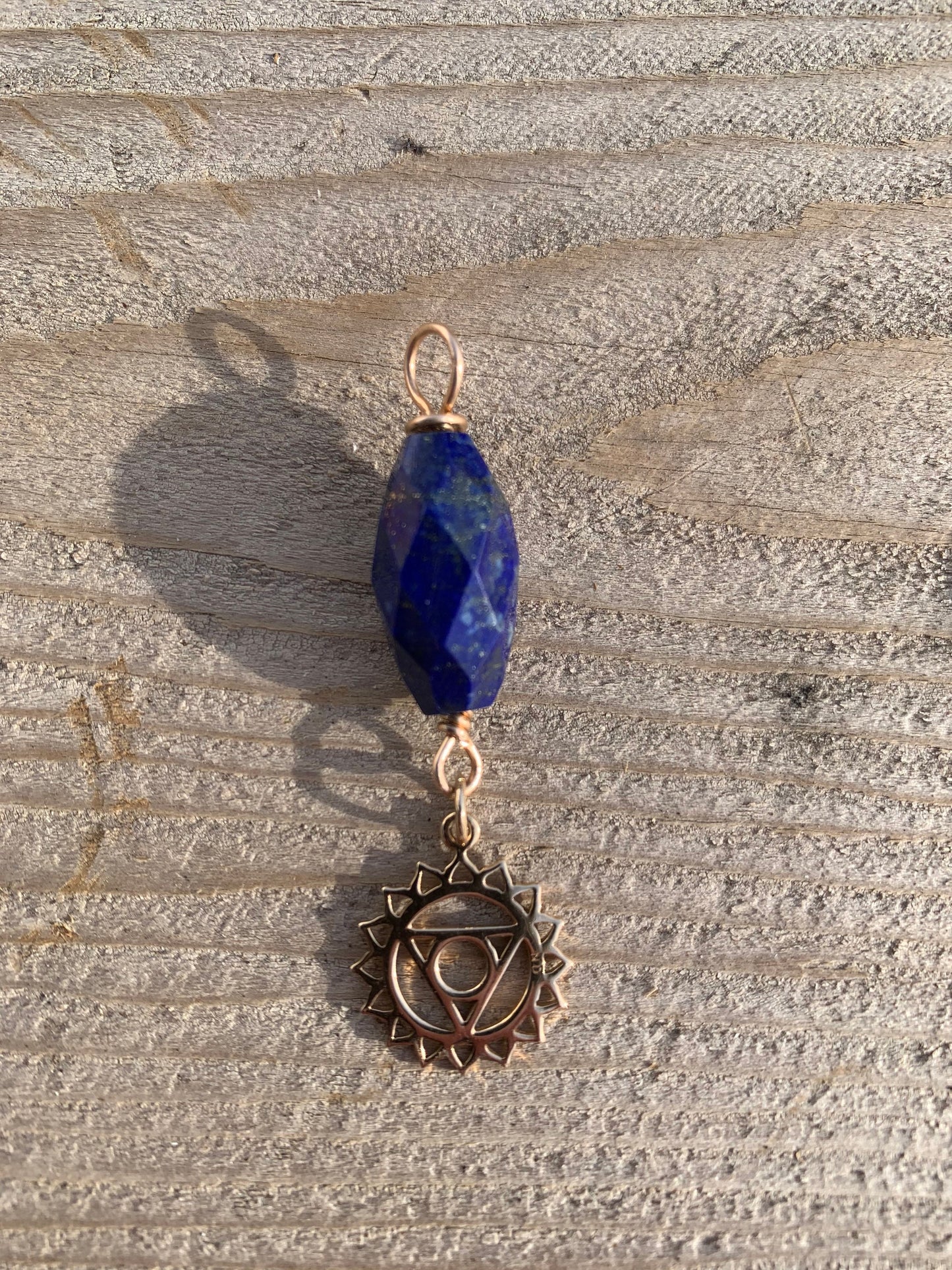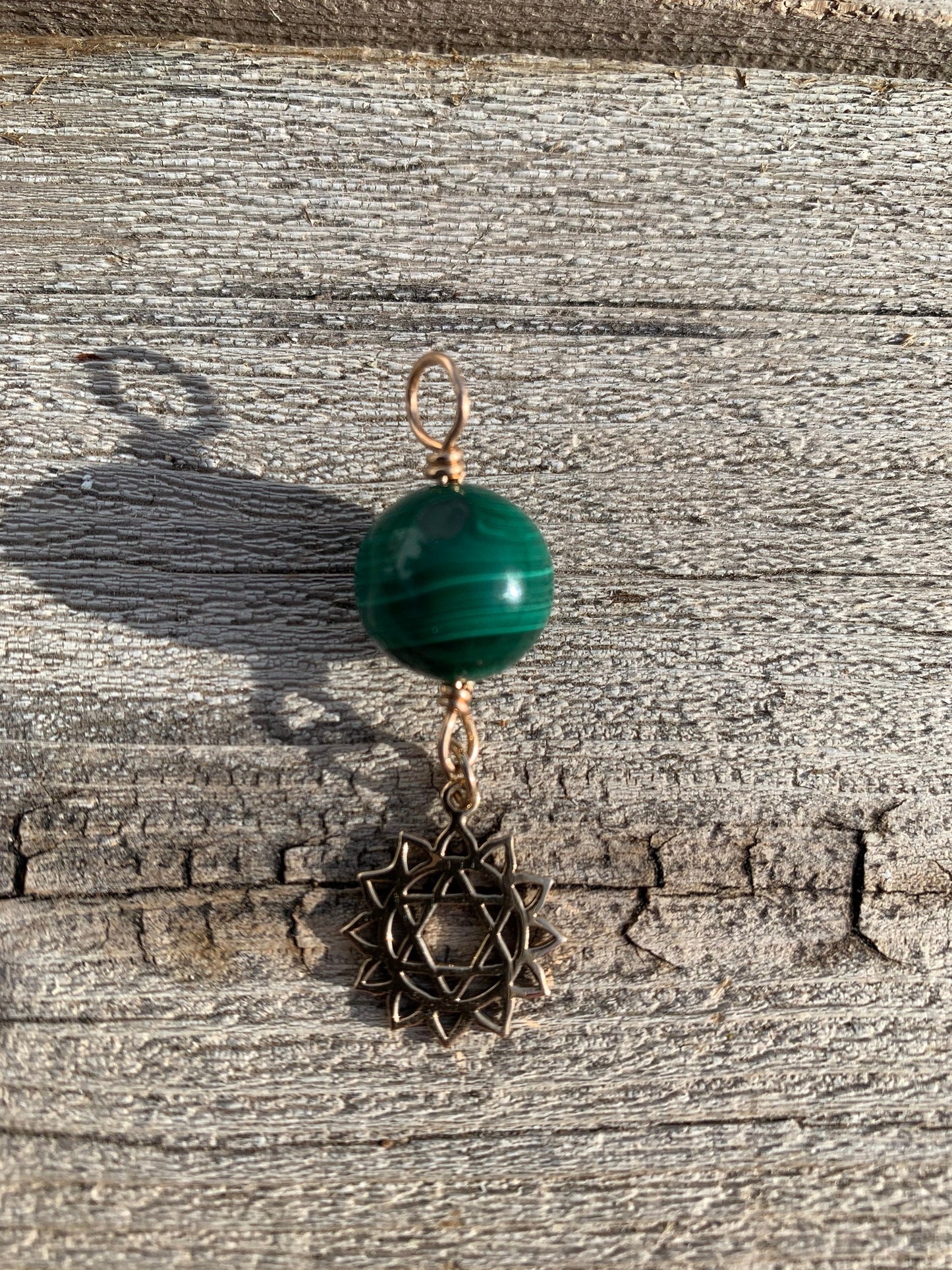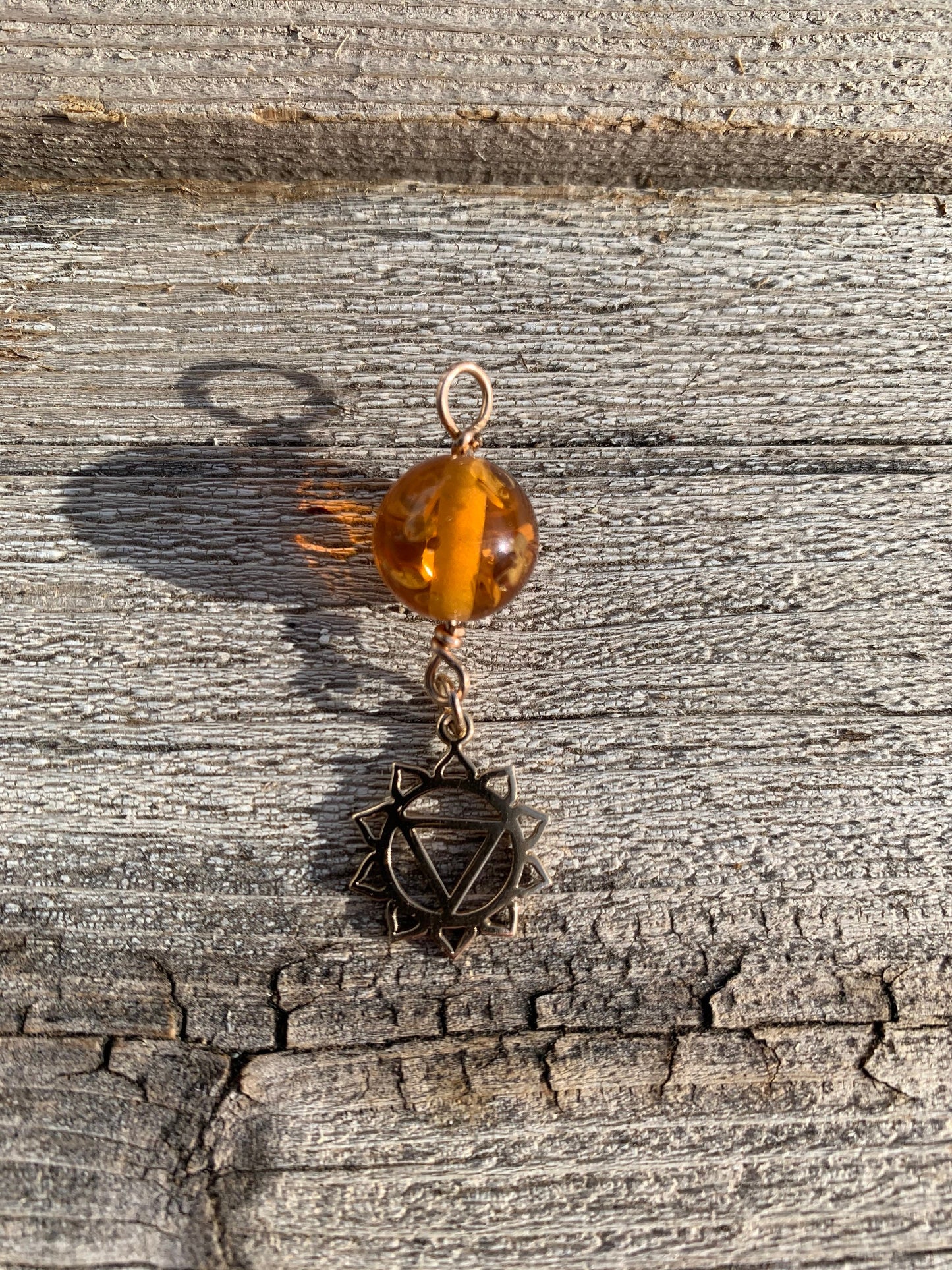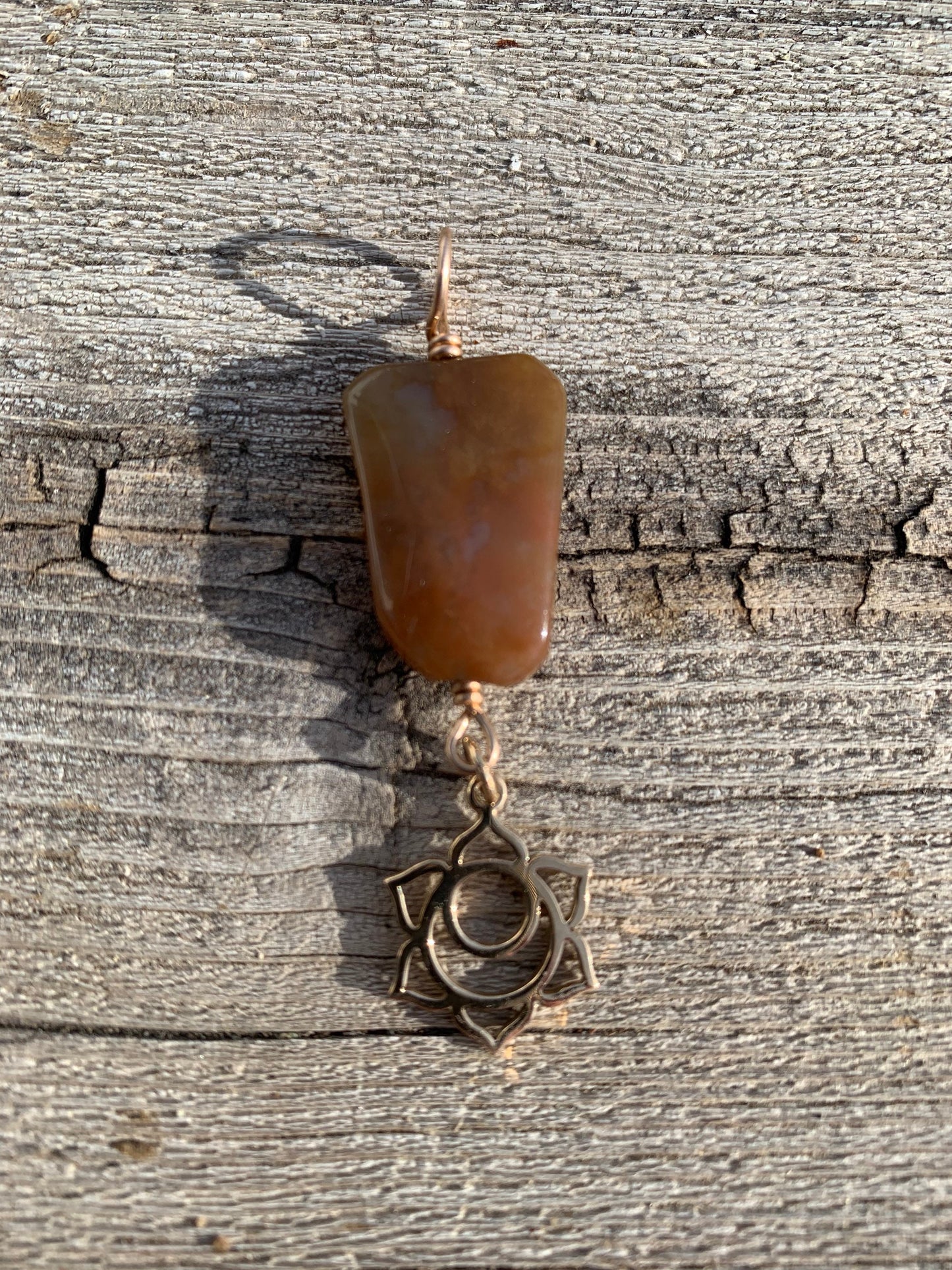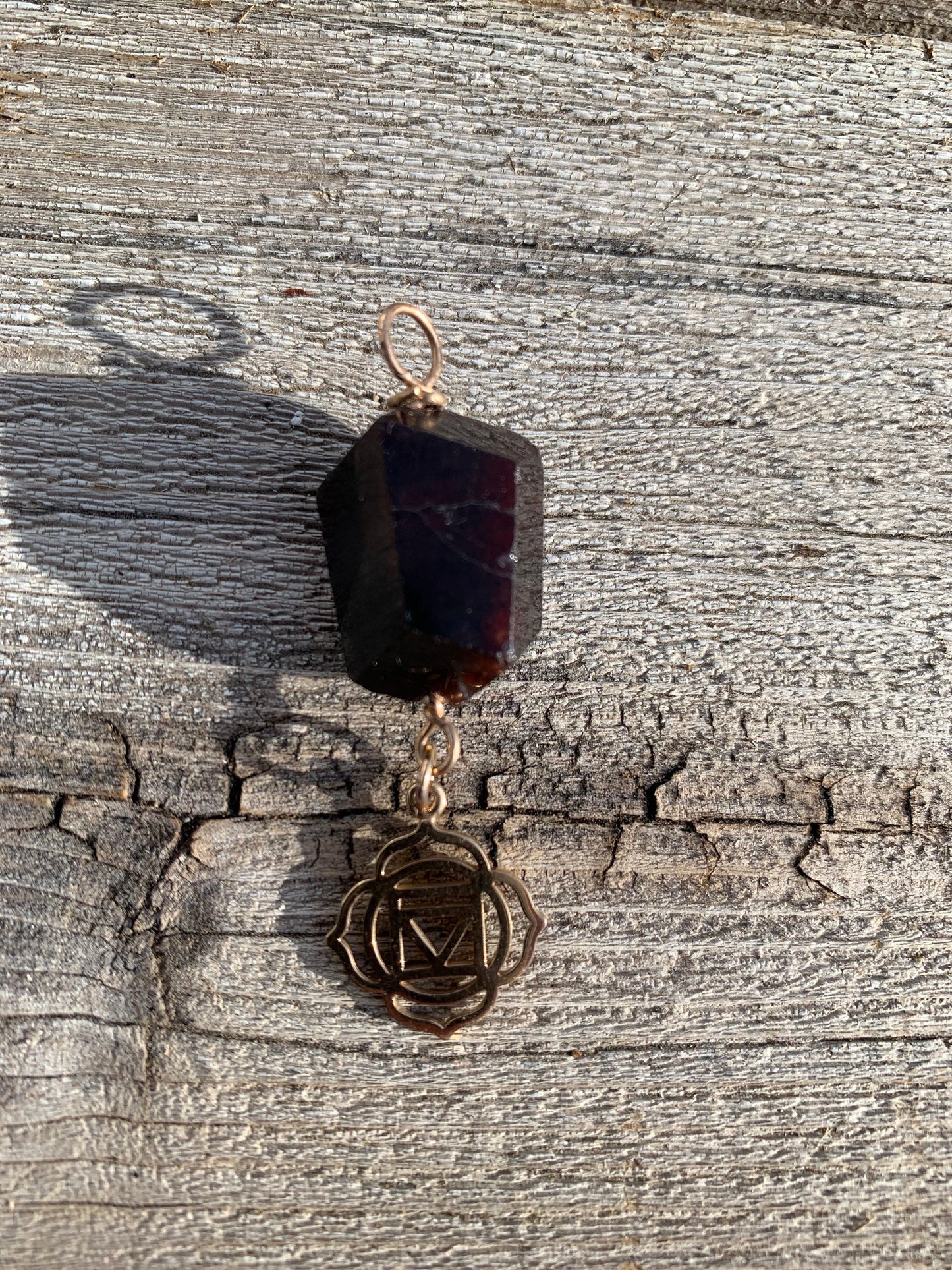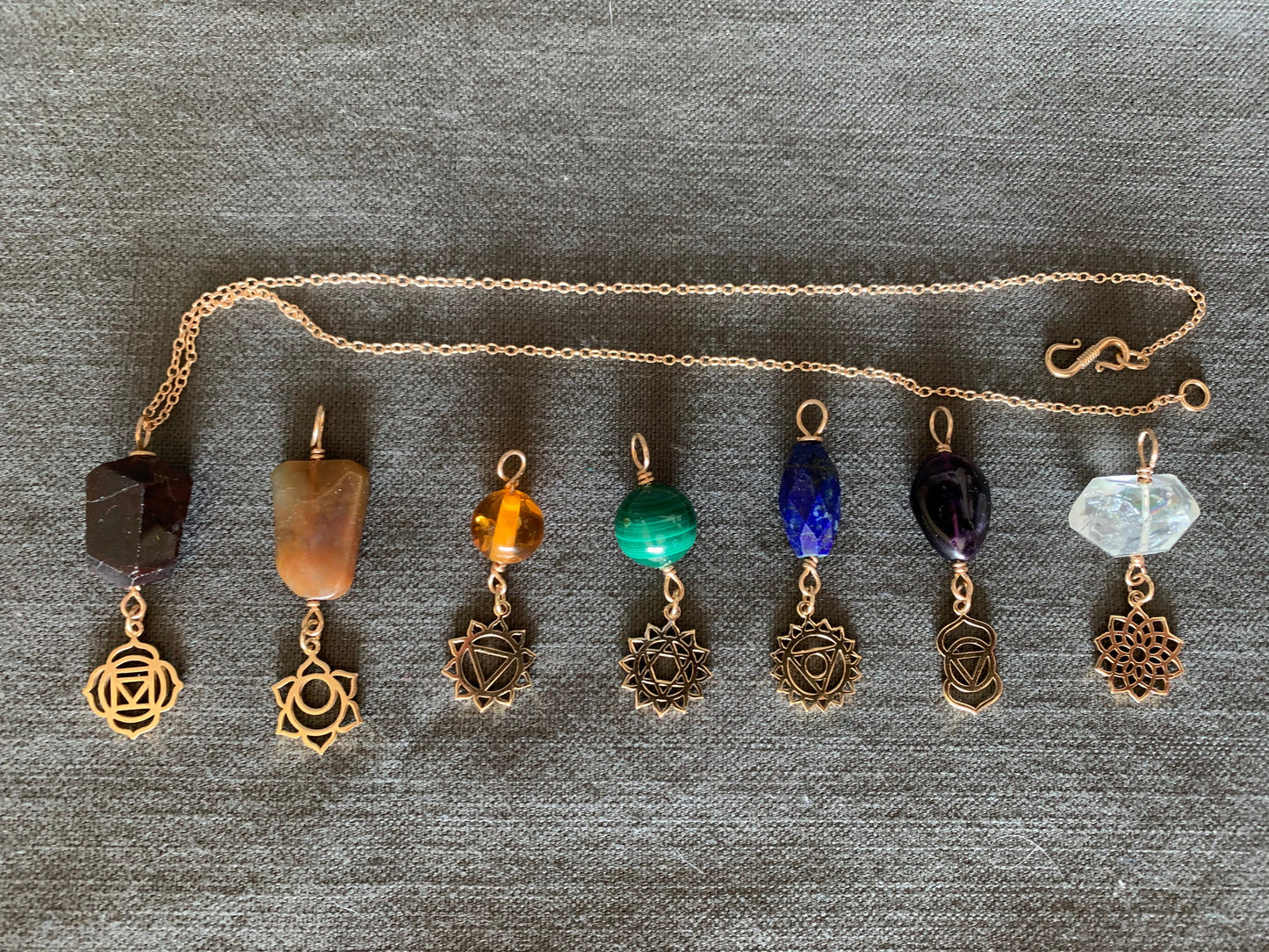Boho Gypsy's Treasures
Chakra pendants
Chakra pendants
Couldn't load pickup availability
Chakra pendants:
Each pendant is sold separately with a bronze chain, you chose the length that works for you. Contact me with length
The bronze charms represent each chakra point with a stone that co-ordinates with that chakra. I have given some more information below with the website I used.
Root Chakra - Garnet; approx 2" L
Sacral Chakra - Carnelian; approx 2.25"L
Solar Plexus Chakra - Baltic Amber; approx 1.75"L
Heart Chakra - Malachite; approx 1.75"L
Throat Chakra - Afghan Lapis; approx 2"L
Third Eye Chakra - Amethyst; approx 2"L
Crown Chakra - Clear Quartz; approx 2"L
"Chakra (Sanskrit: चक्र, IAST: cakra, Pali: cakka, lit. wheel, circle; English: /ˈtʃʌk-, ˈtʃækrə/ CHUK-, CHAK-rə[2]) are various focal points used in a variety of ancient meditation practices, collectively denominated as Tantra, or the esoteric or inner traditions of Hinduism.[3][4][5]
The concept is found in the early traditions of Hinduism.[6] Beliefs differ between the Indian religions, with many Buddhist texts consistently mentioning five chakras, while Hindu sources offer six or even seven.[7][3][4] Early Sanskrit texts speak of them both as meditative visualizations combining flowers and mantras and as physical entities in the body.[7] Within kundalini yoga, the techniques of breath exercises, visualizations, mudras, bandhas, kriyas, and mantras are focused on manipulating the flow of subtle energy through chakras.[6][8]
The modern Western chakra system arose from multiple sources, starting in the 1880s, followed by Sir John Woodroffe's 1919 book The Serpent Power, and Charles W. Leadbeater's 1927 book The Chakras, which introduced the seven rainbow colours for the chakras. Psychological and other attributes, and a wide range of supposed correspondences with other systems such as alchemy, astrology, gemstones, homeopathy, Kabbalah and Tarot were added later."
~https://en.wikipedia.org/wiki/Chakra
"1. Root Chakra (Muladhara)
The Muladhara, or root chakra, represents our foundation. On the human body, it sits at the base of the spine and gives us the feeling of being grounded. When the root chakra is open, we feel confident in our ability to withstand challenges and stand on our own two feet. When it's blocked, we feel threatened, as if we're standing on unstable ground.
Location: Base of spine, in tailbone area
What it controls: Survival issues such as financial independence, money, and food
Mantra: "I can't grow from an unsteady foundation."
Color: Red
Element: Earth
Stone: Garnet
Yoga pose: Warrior I
When it develops: 1-7 years old
2. Sacral Chakra (Swadhisthana)
The Swadhisthana, or sacral chakra, helps inform how we relate to our emotions and the emotions of others. It also governs creativity and sexual energy. Those with a blocked sacral chakra could feel a lack of control in their lives.
Location: Lower abdomen, about 2 inches below the navel
What it controls: Your sense of abundance, well-being, pleasure, and sexuality
Mantra: "I always honor others but not before myself."
Color: Orange
Element: Water
Stone: Carnelian
Yoga pose: Bound Angle Pose
When it develops: 8-14 years old
3. Solar Plexus Chakra (Manipura)
The third chakra, the solar plexus chakra, speaks to your ability to be confident and in control of your life. Think back to the last time you had butterflies or felt a pit in the stomach: That's the Manipura chakra at work. If your solar plexus chakra is blocked, you might feel overwhelming amounts of shame and self-doubt. Those with open sacral chakras are free to express their true selves.
Location: Upper abdomen in the stomach area
What it controls: Self-worth, self-confidence, and self-esteem
Mantra: "Self-love starts when I accept all parts of myself."
Color: Yellow
Element: Fire
Stone: Amber
Yoga pose: Boat Pose
When it develops: 15-21 years old
4. Heart Chakra (Anahata)
The Anahata, or heart chakra, is the bridge between the lower chakras (associated with materiality) and the upper chakras (associated with spirituality). As the name suggests, this chakra can influence our ability to give and receive love—from others and ourselves. Someone with a blocked heart chakra will have difficulty fully opening up to the people in their life. If someone's heart is open, they can experience deep compassion and empathy.
Location: Center of chest, just above the heart
What it controls: Love, joy, and inner peace
Mantra: "When I love myself, loving others comes easily."
Color: Green
Element: Air
Stone: Malachite
Yoga pose: Camel Pose
When it develops: 21-28 years old
5. Throat Chakra (Vishuddha)
The Vishuddha, or throat chakra, gives voice to the heart chakra and controls our ability to communicate our personal power. When it's functioning at full capacity, it allows us to express ourselves truly and clearly. Someone with a blocked throat chakra will feel like they have trouble finding the words to say how they truly feel.
Location: Throat
What it controls: Communication, self-expression, and truth
Mantra: "I speak my truth, always."
Color: Light Blue/Turquoise
Element: Sound/Music
Stone: Lapis
Yoga pose: Fish Pose
When it develops: 29-35 years old
6. Third-Eye Chakra (Ajna)
As we move up the body, we're getting closer to communion with the divine. The Anja, or third-eye chakra, controls our ability to see the big picture and connect to intuition. Think of it as the eye of the soul: It registers information beyond the surface level. Visions and intuitive hits are not uncommon for someone with an open third-eye chakra.
Location: Forehead between the eyes (also called the Brow Chakra)
What it controls: Intuition, imagination, and wisdom
Mantra: "I am open to exploring what cannot be seen."
Color: Dark Blue/Purple
Element: Light
Stone: Amethyst
Yoga pose: Child's Pose
When it develops: 36-42 years old
7. Crown Chakra (Sahasrara)
The Sahasrara, or crown chakra, the highest chakra, sits at the crown of the head and represents our ability to be fully connected spiritually. When you fully open your crown chakra—something very few people ever do!—you're able to access a higher consciousness.
Location: The very top of the head
What it controls: Inner and outer beauty, spiritual connection
Lesson: "I am a vessel for love and light."
Color: Violet/White
Element: Divine Consciousness
Stone: Clear quartz
Yoga pose: Headstand
When it develops: 43-49 years old"
~https://www.mindbodygreen.com/0-91/The-7-Chakras-for-Beginners.html
Share
